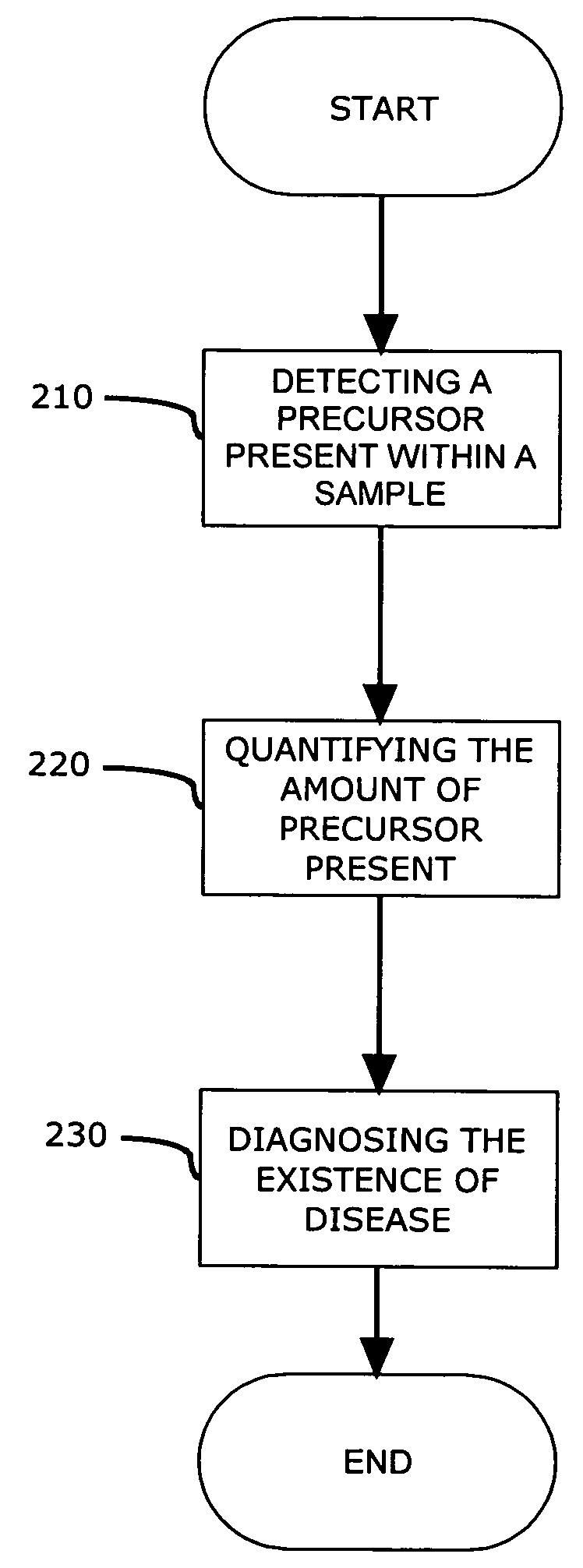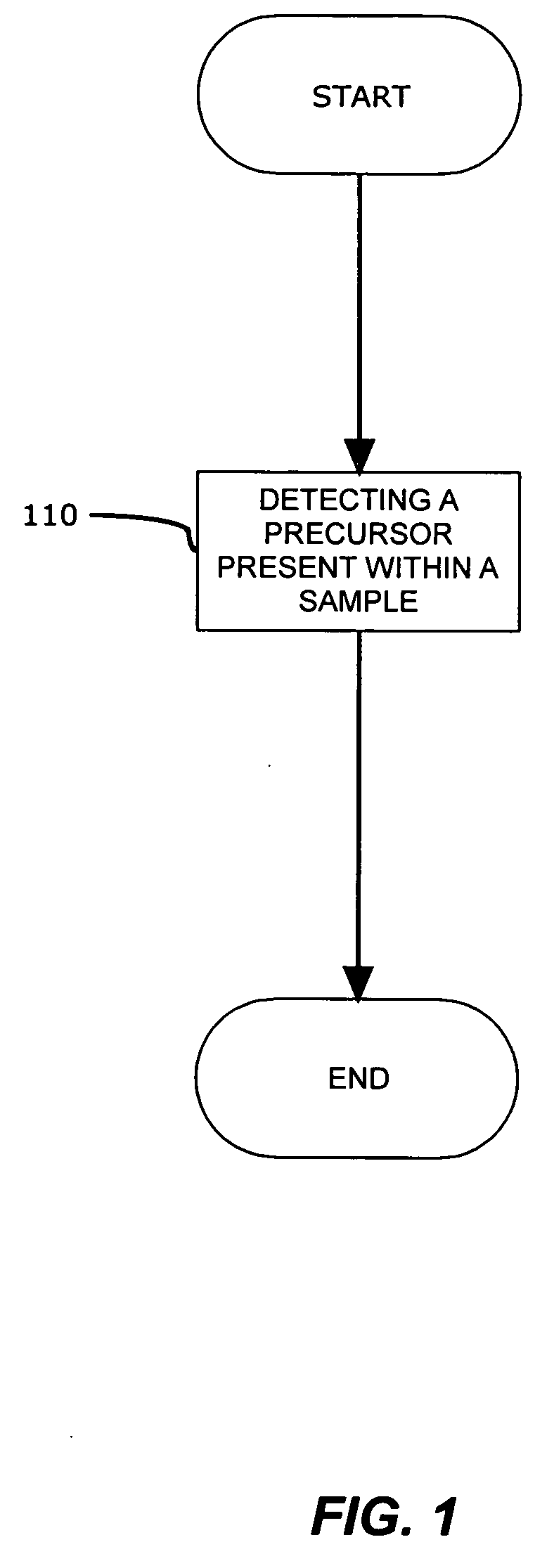Precursors and enzymes associated with post translational modification of proteins implicated in isoform generation of PCNA
a technology of protein isoform generation and precursors, applied in the field of oncology, can solve the problems of inability to reliably diagnose cancer, lack of reliable and specific deterministic, and difficult early diagnosis of cancer, and achieve the effect of minimal invasiveness and rapid diagnosis
- Summary
- Abstract
- Description
- Claims
- Application Information
AI Technical Summary
Benefits of technology
Problems solved by technology
Method used
Image
Examples
Embodiment Construction
[0016]Reference will now be made in detail to the presently preferred embodiments of the invention, examples of which are illustrated in the accompanying drawings.
[0017]In a preferred embodiment, a method for detecting genomic and proteomic “precursors” is shown in FIG. 1. The precursors may exist within an intracellular, intercellular or extracellular environment, and provide an early stage indicator of the capability to produce certain proteins (e.g., enzymes) or indicate the presence of these proteins that may, either directly or indirectly, promote and / or be responsible for the post translational modification of other proteins, such as Proliferating Cell Nuclear Antigen (PCNA), which play a role in DNA replication.
[0018]Genomic precursors referred to herein may include DNA, cDNA, and / or RNA (mRNA) templates for these enzymes that may be associated with the post translational modification of the PCNA isoform. Proteomic precursors may include various proteins / enzymes such as methy...
PUM
| Property | Measurement | Unit |
|---|---|---|
| Fluorescence | aaaaa | aaaaa |
| Affinity | aaaaa | aaaaa |
Abstract
Description
Claims
Application Information
 Login to View More
Login to View More - R&D
- Intellectual Property
- Life Sciences
- Materials
- Tech Scout
- Unparalleled Data Quality
- Higher Quality Content
- 60% Fewer Hallucinations
Browse by: Latest US Patents, China's latest patents, Technical Efficacy Thesaurus, Application Domain, Technology Topic, Popular Technical Reports.
© 2025 PatSnap. All rights reserved.Legal|Privacy policy|Modern Slavery Act Transparency Statement|Sitemap|About US| Contact US: help@patsnap.com



